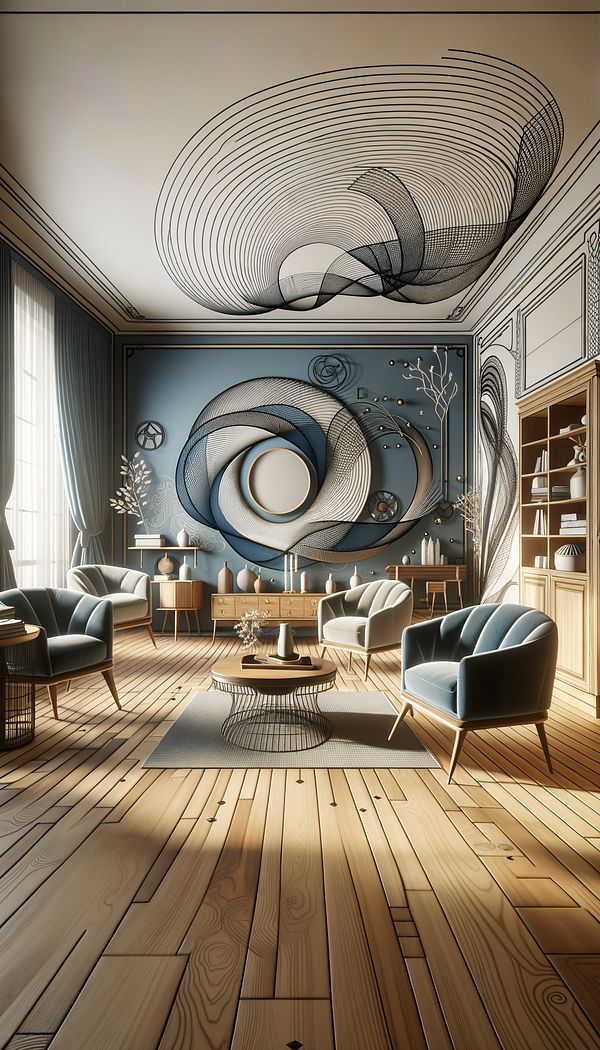What is Repetition?
Repetition is a key design principle involving the repeated use of elements or motifs to create a sense of harmony and consistency in a space.
Description
Repetition is one of the fundamental principles of interior design that can significantly enhance the aesthetics and cohesion of any space. By repeating elements such as color, shape, pattern, texture, or material, designers are able to create a rhythm that guides the eye through the room, introduces unity, and reinforces a particular style or theme. The repetition of design elements can make a space feel more organized, balanced, and harmonious.
However, it's important to implement repetition with a thoughtful approach to avoid monotony or overwhelming the senses. By varying the scale, intensity, or positioning of repeated elements, designers can maintain interest and create dynamic spaces. Repetition can be subtle, like a consistent color palette throughout the home, or more pronounced, like a recurring geometric pattern in furnishings and decor.
Properly utilized, repetition ties together individual pieces into a cohesive whole, creating a sense of order and predictability that is visually pleasing and comfortable for the inhabitants. It's an essential tool in achieving a balanced interior that feels both curated and naturally cohesive.
Usage
Common examples of repetition in interior design include the use of a uniform color scheme throughout a home, the repeated use of a particular shape or material in furniture and accessories, and the strategic placement of similar artwork or decorative objects across different areas of a space.
FAQs
-
How does repetition differ from pattern?
Repetition involves the recurring use of specific design elements to create unity and harmony, while a pattern refers to a repeated decorative design. Repetition can be considered a broader concept that encompasses patterns but also includes the repetition of colors, textures, and other elements beyond decorative designs.
-
Can repetition be used in all design styles?
Absolutely. Despite its varying applications, repetition is a universal design principle that can be adapted to suit any interior design style, from minimalist to eclectic. The key is in how elements are repeated and the visual effect they aim to achieve.
-
How can repetition enhance the function of a space?
In addition to its aesthetic benefits, repetition can also enhance the functionality and flow of a space. For example, repeating the same type of lighting fixtures throughout an area can provide consistent illumination, while the use of similar materials can signify a path or guide movement.
Practical Application
When applying repetition in your design project, start by identifying a key element that resonates with the overall theme or style you wish to convey. This could be a color, texture, material, or shape. Then, thoughtfully incorporate this element in various components of your space, considering scale and positioning to keep the design interesting and balanced. Avoid overuse by mixing in contrasting elements or utilizing variations to maintain a dynamic atmosphere without sacrificing coherence.
-
Furniture Types599 articles
-
Decorating Principles & Elements330 articles
-
Wall & Ceiling Treatments35 articles
-
Color & Patterns154 articles
-
Textiles & Upholstery252 articles
-
ChambrayChambray is a lightweight cotton fabric with a plain weave and a slightly glossy surface.
-
Filament LightingFilament lighting refers to a type of light source characterized by visible filaments inside the bulb that glow to produce light.
-
Special OrderA custom or non-stock item ordered specifically for a client's project.
-
DormerA dormer is a structural element of a building that extends vertically beyond the plane of a pitched roof.
-
MoiréMoiré is a unique visual phenomenon produced by the superimposition of two or more sets of fine patterns or grids.
